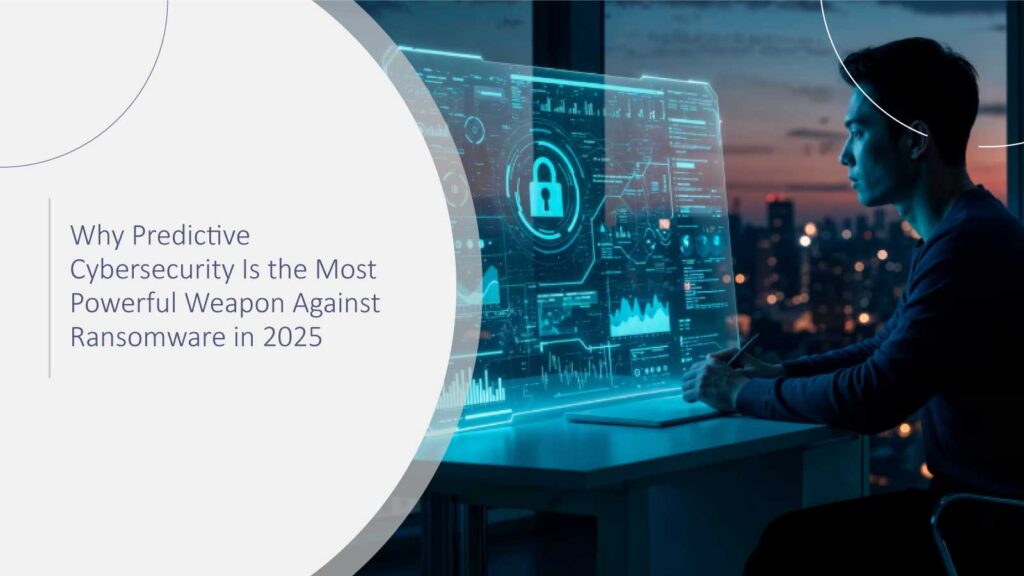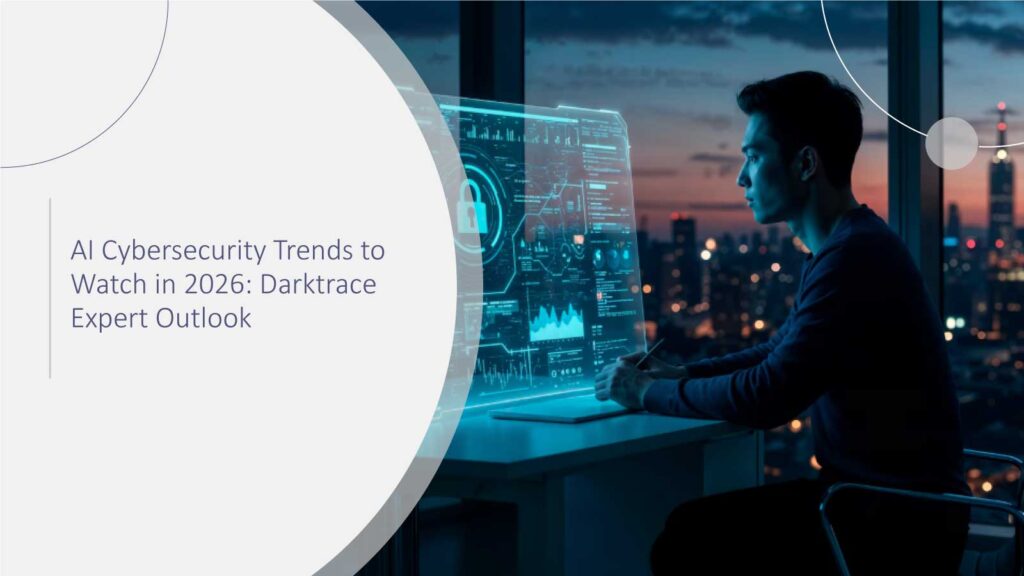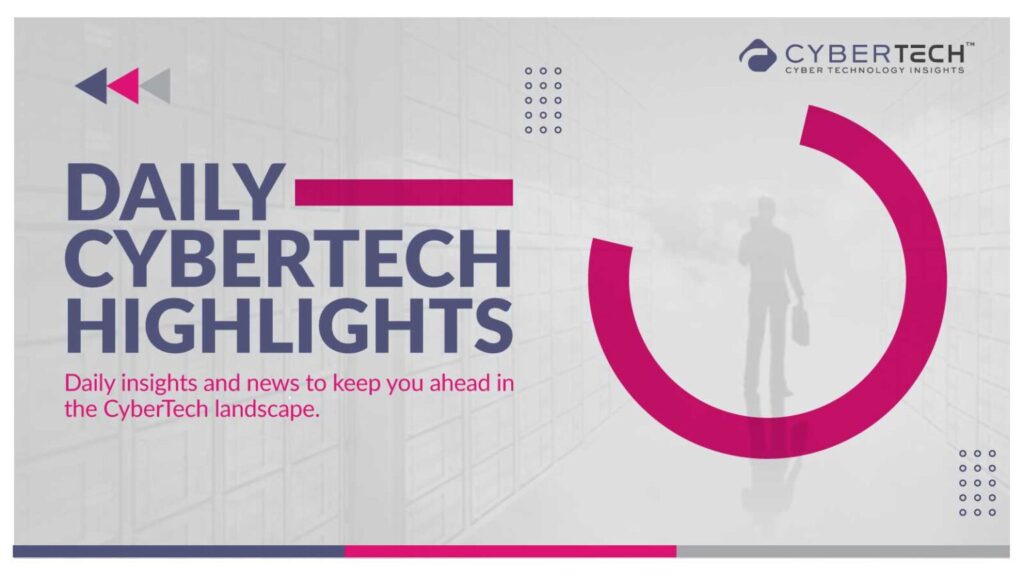Imagine your morning email: not a warning that “files are locked,” but a gentle notification that your system detected a suspicious process at 2:11 a.m. and nothing was affected. That’s the normal promise of predictive cybersecurity: see patterns early, respond in seconds, and maintain workflow. Why now? Because ransomware in 2025 isn’t a blunt instrument. It’s coordinated, data-driven, and often automated. U.S. organizations report billions in losses, and attackers frequently couple encryption with data theft to raise leverage. The FBI’s latest Internet Crime Report logged $16+ billion in cybercrime losses in 2024 and noted ransomware’s persistent pressure on critical infrastructureevidence that timing and foresight matter more than ever.
What “Predictive” Truly Entails
Predictive cybersecurity leverages behavioral analysis, machine learning, and near-real-time threat intelligence to predict malicious intent before encryption or exfiltration goes into hyperdrive. It trains on baseline activity (who touches what, when, and how) and raises an early alarm: off-hours bulk file reads, unusual admin token usage, or lateral movement into sensitive shares.
Imagine it as weather radar for your network: you don’t eliminate the presence of storms, but you close the windows long before the rain. The Verizon 2025 DBIR supports this path: ransomware (with or without encryption) increased in frequency in their sample, and exploitation on edge devices rose, making immediate, predictive visibility on those vectors critical.
The 2025 Ransomware Reality (and Why Prediction Wins)
Three shifts characterize today’s environment:
Bigger stakes, faster moves. Attackers automate initial access and pivoting. The FBI’s 2024/2025 reporting emphasizes both rising losses and sustained pressure on critical infrastructure sectors where minutes matter.
Data theft as leverage. Sophos’ State of Ransomware 2025 highlights exfiltration and negotiation dynamics; companies still pay at times, but median payments fell year over year as organizations improved resilience and bargaining.
Crypto crime changes but victim payments can fall. Chainalysis sees ~35% YoY drop in overall ransom payments in 2024, attributed to law-enforcement pressure and more victims saying no. That doesn’t decrease attempts; that shows better preparation backups, isolation, and early detection is effective.
A late notice makes a typical Tuesday a week of recovery. An early notice keeps Tuesday… Tuesday.
How Predictive Cybersecurity Systems Work – Step by Step
1) Create a baseline.
Tools capture typical user, device, and service behaviors (logon periods, file access levels, common destinations). In finance or healthcare in the U.S., this usually means hard profiles for service accounts and edge devices, where DBIR witnessed notable growth in exploitation in 2025.
2) Catch subtle variations early.
An HR account counts thousands of files at 1:58 a.m. from an additional terminal; an edge appliance triggers suspicious outbound traffic; a help-desk impersonation triggers MFA exhaustion. Good models detect the “tell” before the demand note is sent.
3) Correlate with threat intelligence.
Signals (IPs, TTPs, toolchains) correspond to known ransomware environments and new campaigns. Chainalysis’s visibility into crypto flows assists in enhancing context about wallets tied to extortion.
4) Act automatically, then alert.
The platform throttles or quarantines hosts, revokes tokens, blocks C2, and snapshots data—before encryption or bulk exfiltration. Analysts awaken to a neat case file, not a crisis.
Why Predictive Beats “Wait and React”
A. It narrows the attack window.
Ransomware attackers more often combine initial access + swift pivot. Predictive analytics capture the pre-encryption phase (privilege escalations, staging, and lateral movement), reducing mean time to detection from hours to minutes or seconds. Verizon’s 2025 DBIR observes the substantial increase of ransomware in system-intrusion trends; prior visibility is the catalyst.
B. It minimizes business impact and payments.
Containment before detonation maintains operations. Sophos’ 2025 research indicates organizations settling better and paying lower medians, indicative of greater posture and preparedness. Certain sectors even report not paying at all as confidence increases.
C. It mimics the way attackers profit.
Chainalysis’ 2025 research indicates less overall paid out to ransomware operators compared to 2023 evidence that when defenders anticipate and prepare, attackers reap less. That cycle dissuades copycats.
A Flash U.S. Overview (Practical, Realistic)
An East Coast health care professional reinforced edge telemetry upon observing DBIR’s focus on device exploitation. It optimized models for PHI-proximate shares and service accounts.
During: At 02:14, an unusual off-hours file listing and an unusual outbound connection prompted auto-isolation and token revocation.
Forensics linked the activity to a recognized ransomware affiliate’s infrastructure. Patient services remained up. Incident cost = a normal investigation, not a multi-day downtime.
This ain’t sci-fi. It’s operations with the appropriate signals, models, and playbooks each and every night.
Implementation Playbook For Predictive Cybersecurity
Prioritize high-leverage telemetry.
Begin with identity, endpoints, and edge devices/VPNs the very paths adversaries prefer, and the areas DBIR 2025 identifies for exploitation growth.
Incorporate credible threat intel.
Combine commercial, open-source, and crypto-forensics (such as Chainalysis) to enhance detections against recognized ransomware environments.
Automate the first-response behavior.
Pre-approve the containment of high-confidence anomalies: quarantine endpoints, process kill, tokens disable, and block outbound traffic. Reserve humans for adjudication not for tracking every ping.
Train like you mean it.
Practice tabletop drills on pre-encryption behaviors and exfiltration-only scenarios. Sophos emphasizes the use of negotiation and exfiltration strategies; practice responses that do not assume that encryption is the sole objective.
Measure and iterate.
Monitor MTTD, MTTR, false-positive rate, and % contained pre-encryption. Utilize post-incident reviews to adjust baselines and tuning.
What Today’s Data Says About Tomorrow
Payouts decline when defenses mature. CChainalysis’s35% YoY drop in 2024 ransomware payments indicates resilience operates at scale.
Attackers evolve, but so can you. Sophos’ 2025 report indicates changing economics (lower medians, increased negotiation), while independent Q2-2025 coverage demonstrates high outliers evidence that early detection and robust recovery plans limit leverage.
Edge watchfulness counts. Verizon’s 2025 DBIR indicates a steep increase in edge device exploitation; predictive monitoring there returns disproportionately high returns.
Pressure from law enforcement does help. The FBI indicates aggressive action against large ransomware systems; couple that energy with your predictive stance, and you tip the field.
Bottom line: Forecasting doesn’t take the place of resilience; it enhances it. Durable, unchangeable backups and tried-and-true recovery build confidence to negotiate or comfortably decline.
Conclusion (Your Next Best Step)
Predictive cybersecurity silences noisy signals to produce foresight. It provides your team with the jump start that keeps data secure and business normal. If you’re in security leadership, select a high-value enclave finance, EMR, or OT and pilot a predictive stack that baselines behavior, integrates threat intel, and automates first response. Then scale.
Your peaceful inbox tomorrow morning will reward you.
FAQs
1) How does predictive cybersecurity differ from “AI antivirus”?
Predictive methods forecast behaviors and intent within identities, endpoints, and network paths not solely known malware signatures. That makes them effective against new or altered ransomware variants. Verizon’s 2025 DBIR demonstrates ransomware’s increased presence throughout system intrusion, supporting the necessity of behavior-first detection.
2) Does predictive cybersecurity defense shift ransom economics?
Yes. Chainalysis noted ~35% fewer overall ransomware payments in 2024 compared to 2023, which is in keeping with better preparedness and greater refusal to pay. That transition indicates better prevention and recovery confidence.
3) If attackers concentrate on data theft rather than encryption, is prediction still useful?
Absolutely. Sophos 2025 highlights exfiltration-driven pressure and negotiation trends. Predictive analytics catch staging and unusual egress early, enabling quick isolation and blocking before large data volumes move.
4) Where should a U.S. enterprise start?
Harden and instrument edge devices/VPNs, integrate reputable intel (including crypto-forensics), and automate high-confidence containment. These align directly with DBIR 2025 findings on exploitation patterns.
5) What metrics prove it’s working?
Monitor MTTD/MTTR, false positives, % of incidents had pre-encryption within them, and data exfil prevented. Combine those with recovery KPIs and board-level trends (e.g., ransom paid = $0 for the year).
For deeper insights on agentic AI governance, identity controls, and real‑world breach data, visit Cyber Tech Insights.
To participate in upcoming interviews, please reach out to our CyberTech Media Room at sudipto@intentamplify.com.







